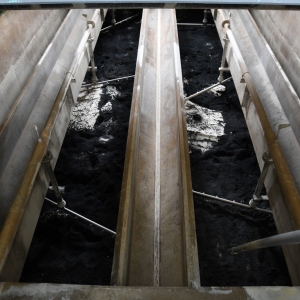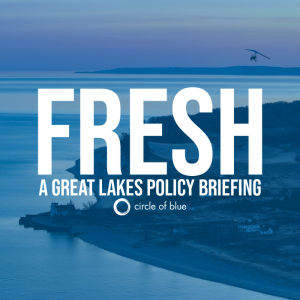Welcome to “What’s Up With Water” – your need-to-know news of the world’s water from Circle of Blue. I’m Eileen Wray-McCann.
A new report from the United Nations highlights the environmental factors that produce deadly, drug-resistant pathogens. According to the World Health Organization, these super pathogens are among the greatest health risks on the planet. They already cause at least 5 million deaths a year, a number that could double by 2050. Polluted waterways are making the problem worse, and the U.N. report explains how. Antimicrobial drugs are designed to kill viruses, bacteria, and parasites that sicken humans, animals, and plants. Extended exposure to the drugs at low levels allows some pathogens to survive and build immunity. The drug then becomes less effective at fighting them. This growing concern tends to focus on the over-use of medicines in healthcare and agriculture, but the U.N. reminds officials to pay attention to the risk from waste streams. Poorly treated wastewater is a source of drug-resistant pathogens. This is a problem especially in high-poverty countries with poor hygiene and sanitation. The report calls on governments to take action. This means regulating industrial waste, treating municipal wastewater, expanding public hygiene campaigns, and reducing the use of antimicrobial drugs.
In Australia, the government has refused to allow a pair of open-pit coal mines because of their potential to harm to local sources of fresh water and damage the Great Barrier Reef. The Associated Press reports that it is the first time that Australia has denied a coal permit under national environmental law. The decision was influenced by proximity to one of Australia’s greatest natural assets. The two open-pit mines of the Central Queensland Coal Project would have been dug just 6 miles from the Great Barrier Reef. The reef is a complex system of marine biodiversity, and is severely stressed by the warming climate. Unusually high water temperatures have caused “bleaching” events four times in the last seven years. These events make the coral more vulnerable and can kill them. Australia plays a role in the threat to its reefs. The country is one of the world’s largest producers of coal, which is a major source of carbon pollution that traps heat in the atmosphere.
In the United States, the largest city in Ohio is taking a low-carbon approach to protect its water supply system from extreme weather. The city of Columbus recently opened a solar-powered microgrid at one of its water booster stations. The microgrid uses solar panels and battery storage, which can keep water flowing through the system during power outages. Water treatment plants require a steady supply of energy to operate. Traditionally, water departments have used diesel generators as a backup power source. But diesel has a major drawback: it generates heat-trapping greenhouse gases. Phil Schmidt is an engineer at the Columbus Water Department. He says that the microgrid will lower carbon emissions while still providing reliable power. And Columbus is not the only city to see the benefits of local solar power. Babcock Ranch is a city in southwest Florida that operates its own solar microgrid. When Hurricane Ian crossed the state last September, millions of Florida homes lost power. But not the residents of Babcock Ranch, where the microgrid withstood the storm, keeping the lights on and the water flowing.
And that’s What’s Up With Water from Circle of Blue, where water speaks. You’ll find more news and analysis – and a chance to support our work – at
circleofblue.org. This is Eileen Wray-McCann – thanks for being here.





